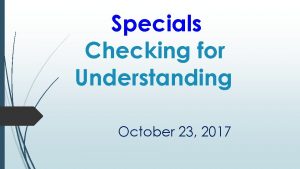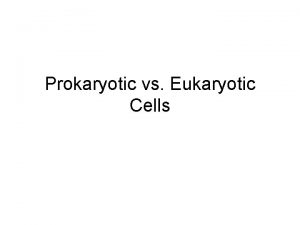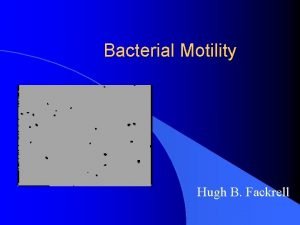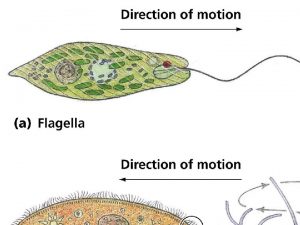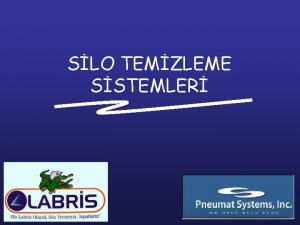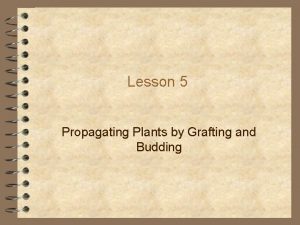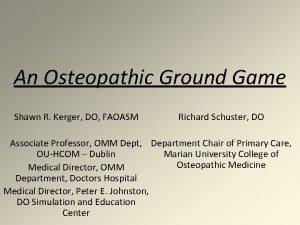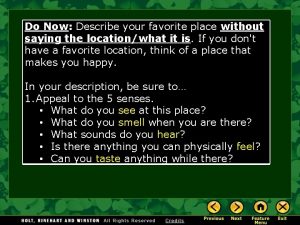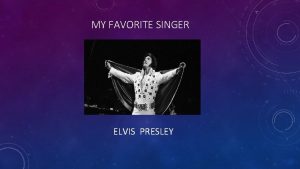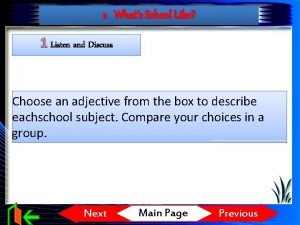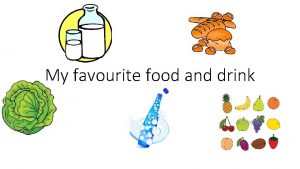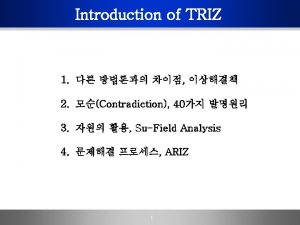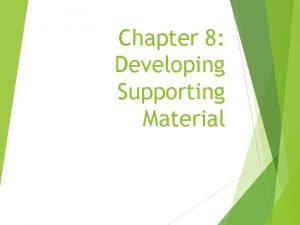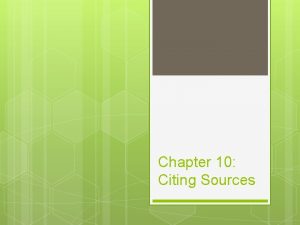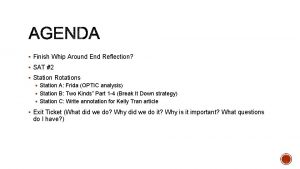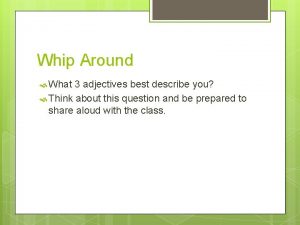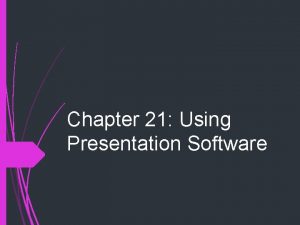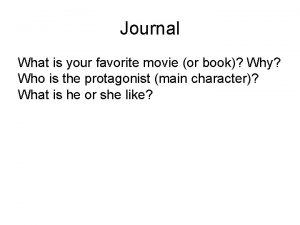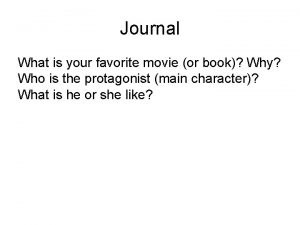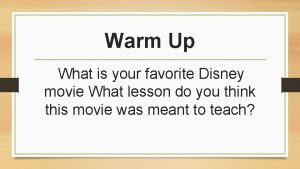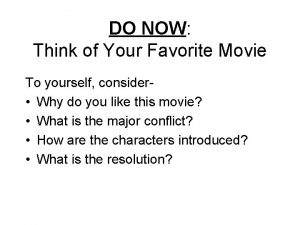Whip Around What is your favorite childhood movie











































- Slides: 43

Whip Around • What is your favorite childhood movie? • Think about this question and be prepared to share aloud with the class.

CHAPTER 12 PERSUASIVE SPEAKING Copyright © 2014, 2011, 2008 Pearson Education, Inc. All Rights Reserved.

The Goal of Persuasive Speaking • Persuasion is a communication process that attempts to reinforce or change listeners’ attitudes, beliefs, values, or behaviors. • The ultimate goal of all persuasion is action or change. • Adoption is an action subgoal asking listeners to demonstrate their acceptance of an attitude, belief, or value by performing the behavior suggested by the speaker • Discontinuance is an action subgoal that asks listeners to demonstrate their alteration of an attitude, belief, or value by stopping certain behaviors.

The Goal of Persuasive Speaking • The ultimate goal of all persuasion is action or change. • Deterrence is an action that asks listeners to demonstrate their acceptance of an attitude, belief, or value by avoiding certain behaviors. • Continuance is an action asking listeners to demonstrate their acceptance of an attitude, belief, or value by continuing to perform the behavior suggested by the speaker.

Topics for Persuasive Speeches • Current and controversial subjects are especially adaptable for persuasive speaking. • Select a topic you are interested in or know something about. • Select a subject that is worthwhile and of potential concern to the audience. • Select a topic with a goal for influence or action. • Select an issue that is current. Copyright © 2014, 2011, 2008 Pearson Education, Inc. All Rights Reserved.

Questions for the Listeners • Questions of Fact • Asks what is true and what is false. • Questions of Value • Questions of Policy • Goes beyond seeking a judgmental response to seeking a course of action. • Asks if something is good or bad, desirable or undesirable. • Values are relatively long-lasting ideals that guide behaviors. Copyright © 2014, 2011, 2008 Pearson Education, Inc. All Rights Reserved.

Persuasive Claims • Aristotle claimed that speakers had three modes of persuasion available to them: • Ethos: the speaker’s character as perceived by listeners • Logos: the substance of the speech or the logical appeals the speaker makes • Pathos: the speaker’s evoking of appropriate emotion from the listeners

Persuasive Claims • Stephen Toulmin developed a model to help present everyday persuasive arguments: • The claim • The data • The warrant

Establishing Credibility (Ethos) • Competence • Demonstrate involvement. • Relate experience. • Cite research. • Character • A speaker’s trustworthiness is the audience’s perception of the speaker’s reliability and dependability. • Ethics • Cite sources when information is not your own words and cite them accurately using oral footnotes. • Do not falsify or distort information to make your point. • Show respect for your audience.

Establishing Credibility (Ethos) • Charisma, or the appeal or attractiveness the audience perceives in the speaker, contributing to the speaker’s credibility. • Charismatic speakers are able to involve the audience in their messages. • Becoming Effective Consumers of Persuasion • We spend a great deal of our lives listening to persuasive messages of one kind or another. • It is important to think about what it means to be an effective consumer of those messages. • As listeners, we have both the right and the responsibility to take in accurate, reliable, and worthwhile information.

Becoming Effective Consumers of Persuasion • As listeners, we have both the right and the responsibility to take in accurate, reliable, and worthwhile information. • Listen carefully to the message • Ask these questions: • • Is the speaker knowledgeable? What are the sources the speaker used? Are the sources reliable? Is the evidence worthwhile? Can I believe the evidence? Where could I get additional information? Does the argument seem logical? Copyright © 2014, 2011, 2008 Pearson Education, Inc. All Rights Reserved.

Preparing and Developing a Persuasive Speech Researching the Topic Organizing the Speech Supporting Materials Persuasive Strategies Copyright © 2014, 2011, 2008 Pearson Education, Inc. All Rights Reserved.

Patterns of Organization Problem Solution Organizes main points to show the nature or significance of the problem and to provide justification for the solution The simple design includes two main points: problem and solution. The complex design breaks down the problem into multiple points and provides solutions that have been tried and failed, as well as, the new proposed solution. Cause-Effect Speaker first explains the causes of an event, problem, or issue and Typically a causal pattern contains only two main points: first, the cause, and second, the effect. However, you can have multiple causes for a single effect, or a single cause with multiple effects. then discusses its consequences. Monroe’s Motivated Sequence Specifically developed for persuasive speaking that combines logic and practical psychology. Five steps area involved: attention, need, satisfaction, visualization, and action. Copyright © 2014, 2011, 2008 Pearson Education, Inc. All Rights Reserved.

Monroe’s Motivated Sequence • Alan Monroe in the mid-1930’s • 5 steps for persuading an audience 1) Attention = addresses listeners’ core concerns, making the speech highly relevant to them. 2) Need = isolates the issue to be addressed. 3) Satisfaction = identifies the solution. 4) Visualization = provides the audience with a vision of anticipated outcomes associated with the solution. 5) Action = speaker asks audience members to act according to their acceptance of the message.

Persuasion Activity • Refer to handout

Supporting Materials • Appeals to Needs • Physical needs • Safety needs • Self-esteem needs • Logical Appeals • • • Use of evidence and proof Deductive reasoning Inductive reasoning • Emotional Appeals • Play on feelings • Rhetorical Sensitivity • Being aware of the audience, the situation, the time limits, and what listeners are willing and want to hear. Causal reasoning Reasoning by analogy Copyright © 2014, 2011, 2008 Pearson Education, Inc. All Rights Reserved.

Supporting Material • Appeals to needs – Maslow’s Hierarchy of Needs 17 Copyright © Allyn and Bacon 2008

Logical Appeals v Deductive reasoning : from general information to a specific conclusion • Inductive reasoning: moving from specific information to general conclusions • Causal reasoning: sequence of thought that links causes with effects v Reasoning by analogy: compares similar things or circumstances in order to draw a conclusion 18

Supporting Material • Emotional appeals • Fear, happiness • Can sway people to do things that might not be logical • Ethics demands that we use emotions with care • Speaker should be careful, fair, truthful 19 Copyright © Allyn and Bacon 2008

Use Convincing Evidence • Examples • Narratives • Testimony • Facts • Statistics • Audience’s preexisting knowledge and opinions • Speaker expertise

Address the Other Side of the Argument • One-sided message = does not mention opposing claims • Two-sided message = does mention opposing points of view and sometimes refutes them

Uses Transitions to Give Direction to the Speech • Transitions are words, phrases, or sentences that tie the speech ideas together and enable the speaker to move smoothly from one point to the next. • Full-sentence transitions move from one main point to another; signposts are words or phrases that move between supporting points. • Transition statements are often posed in the restate-forecast form. • Transitions can also be stated as rhetorical questions. • Internal previews and internal summaries also serve as transitions. • Use transitions between main points • Use transitions between supporting points • Use previews and summaries as transitions

Activity • Make a list of transition words. • Be prepared to share aloud with the class.

Fallacies in Argument Development • A fallacy is an argument that is flawed because it does not follow the rules of logic. • Fallacies of Reason • Questionable cause is a fallacy that occurs when a speaker alleges something that does not relate to or produce the outcome claimed in the argument. • An ad hominem fallacy is one that attacks a person rather than the argument itself.

Fallacies in Argument Development • Fallacies of Evidence • Speakers who state opinions as if they are facts can mislead and may present a fallacious argument. • A red herring is a fallacy that uses irrelevant information to divert attention away from the real issue. • A hasty generalization occurs when a speaker does not have sufficient data and therefore argues or reasons from a specific example.

Fallacies in Argument Development • Fallacies of Evidence • A post hoc ergo propter hoc fallacy is a fallacy of reasoning in which one attributes something as a cause simply because it followed (came after) another incident. • Either-or reasoning is a fallacy of reasoning in which only two options exist: There is black or white, right or wrong, but nothing in between.

Evaluating the Persuasive Speech Topic General Requirements Audience Analysis Supporting Materials Organization Delivery Language Choice Copyright © 2014, 2011, 2008 Pearson Education, Inc. All Rights Reserved.

Evaluate the Persuasive Speech • Topic • The topic should merit the audience’s attention. • The audience should be able to see the relationship between the topic and speaker and between the topic and themselves. • The topic should be able to receive adequate coverage in the time available. • General Requirements • The purpose of the speech should clearly be to persuade and be stated as such. • The speech should meet the time requirements set by the assignment. • The speaker should cite sources of information that are not his or her own. • The speech purpose should be relevant to the assignment and related to the audience. • The speech should show evidence of careful preparation.

Evaluate the Persuasive Speech • Audience Analysis • The speech should reflect appropriate audience analysis. • The speaker should relate to and refer to audience members to get them involved and interested in the topic. • The speech should include a goal, that is, the audience should be asked to think something, believe something, or take action. • The speech should show the audience why the topic is important and relevant to them.

Evaluate the Persuasive Speech • Supporting Materials • Supporting materials help the audience to believe the information. • Supporting materials should appeal to the audience’s needs, logic, and emotions. • Supporting materials should include a variety of factual statements, statistical data, personal experiences, analogies, contrasts, examples and illustrations, expert testimony, value appeals, and eyewitness accounts. • Visual aids should be used where appropriate and helpful; they should follow guidelines established by the assignment. • Supporting materials should be documented, cited correctly, and up to date. • Supporting materials help the speaker establish and maintain credibility.

Evaluate the Persuasive Speech • Organization • The introduction should be properly developed. • It should orient the audience to the topic. • It should gain the audience’s attention and arouse interest. • It should include a specific purpose and thesis statement. • It should define terms (if necessary). • It should motivate the audience to listen. • It should be relevant. • It should establish credibility.

Evaluate the Persuasive Speech • Organization • The organization of the body should be clear and easy to follow. • The main points should be clear and parallel in structure. • The main points should be related to the purpose of the speech. • Transitions should provide appropriate links between ideas. • The organizational pattern should be appropriate. • The conclusion should be properly developed. • It should reinforce the purpose by reviewing the main points. • It should end with a memorable thought. • The audience should know what action is expected of them in response to the speech.

Evaluate the Persuasive Speech • Delivery • • • The speaker should be enthusiastic. The speaker should convey a persuasive attitude through focus, energy, and appropriate vocal variety. Nonverbal communication (gestures, movements, eye contact, posture, facial expression) should enhance and clarify the verbal delivery. The speaker should be aware of the audience’s presence and reactions and should adjust her or his delivery accordingly. • The speaker should be confident and poised. • The speaker should convey a sense of the topic’s relevance and importance. • The speaker’s vocal delivery should enhance the speech with appropriate volume, appropriate rate, conversational quality, enthusiastic tone, clear enunciation, appropriate pauses, and appropriate vocal variety.

Evaluate the Persuasive Speech • Language Choice • Language choice should be appropriate to the assignment and audience. • Language should be compelling. • Word choice should be appropriate for the speaker, topic, situation, and audience. • Grammar should be correct and show both competence and an awareness of the “formal” speaking situation. • Word pronunciations should be accurate.

Plan on Creating 2 Outlines • Outline speech material to organize your speech, reveal any weaknesses, and create a blueprint for presentation • Two types of outlines • • Working outline, also called a preparation or rough outline Speaking outline, also called a delivery outline

Working Outlines • Working outlines are rough, preparatory outlines that help students refine and finalize the specific purpose statement, organize main points, and develop supporting points.

Sentence Outlines • Sentence outlines are generally used for working outlines. These outlines reflect exactly what the speaker intends to say and how he or she wants to say it. • Sentence outlines state each main and supporting point as a full declarative statement. • Preparing a working outline in sentence form is important: it forces the speaker to pay attention to the underlying logic of each idea and its relationship to other ideas in the speech; it also previews how the speaker will deliver main points in the actual speech. • The prescription drug supply is under unprecedented attack from a variety of increasingly sophisticated threats. • Technologies for counterfeiting – ranging from pill molding to dyes – have improved across the board.

Speaking Outlines • 1. 2. 3. 4. 5. 6. 7. 8. Speaking outlines, also called delivery outlines, are used when practicing and presenting the speech. These outlines are brief and contain the ideas in condensed form. Create the main speech points Note any obvious subpoints Select an organizational pattern for the main points Create a working outline Organize main points and subpoints Check main points and subpoints for coordination and subordination Transfer the working outline to a speaking outline

Phrase Outlines • Phrase outlines, often used in speaking outlines, express each main and supporting point with a partial construction of the sentence form. • These abbreviated constructions consist of only a few words associated with each point that will remind the speaker of what to say. • Drug supply under attack • Counterfeiting technologies more sophisticated • Unregulated Internet sites

Key-Word Outline • Key-word outlines, also used in speaking outlines, convey each main and supporting point with the smallest possible units of understanding, such as a single word or a very brief phrase. • Threats • Counterfeiting • Internet

Your Outline and References • You will use my outline but your information. • Do not create your own outline format • References • Must have at least 2 • Include the following: • Who? • Year? • Title? • Organization? • Website or journal title? (e. g. Retrieved from www. uhcl. edu/faculty/meagan/sovine)

My Good Friend, Google • Scholar. google. com • Let’s check it out!

Examples • http: //www. youtube. com/watch? v=Asa 3 fw. Qnx. Rg • http: //www. youtube. com/watch? v=gz. Rgn. Dh. KUEY • https: //www. youtube. com/watch? v=dy-DGG 4 ZWp. E
 Whip around strategy
Whip around strategy Unhealable movie
Unhealable movie What is your favourite book and why interview question
What is your favourite book and why interview question Archetype movie
Archetype movie Early childhood and middle childhood
Early childhood and middle childhood Billie eilish favorite fruit
Billie eilish favorite fruit Windows live movie maker themes
Windows live movie maker themes Example of what goes around comes around
Example of what goes around comes around Goes around comes around meaning
Goes around comes around meaning Whip-cracking in the czech republic and slovakia
Whip-cracking in the czech republic and slovakia The cross changes everything
The cross changes everything A single celled organism that lacks a nucleus
A single celled organism that lacks a nucleus Taursus dates
Taursus dates Flagella whip
Flagella whip Arterial line whip
Arterial line whip Chip chick shot odd one
Chip chick shot odd one Whip like flagella
Whip like flagella Four families of orchestra
Four families of orchestra Travel hand signal
Travel hand signal What is circumduction gait
What is circumduction gait Bin whip
Bin whip Catheter whip artifact
Catheter whip artifact Example of patch budding
Example of patch budding Whip tilt shot
Whip tilt shot Navicular whip
Navicular whip Carol ann duffy we remember your childhood well
Carol ann duffy we remember your childhood well Tell me about your childhood
Tell me about your childhood The river of life poem analysis
The river of life poem analysis Achieving your childhood dreams randy pausch
Achieving your childhood dreams randy pausch What is your favourite tv programme
What is your favourite tv programme What's your favourite subject at school
What's your favourite subject at school My favourite means of transport is train
My favourite means of transport is train Describe about favorite place
Describe about favorite place What is your favorite commercial and why
What is your favorite commercial and why What's your favorite food meme
What's your favorite food meme Describe your favourite holiday destination
Describe your favourite holiday destination Elvis presley tombstone misspelled
Elvis presley tombstone misspelled Listen and discuss
Listen and discuss Whats your team
Whats your team Explanatory paragraph
Explanatory paragraph What's your favorite planet
What's your favorite planet What's your favourite food and drink
What's your favourite food and drink Tasty superlative hali
Tasty superlative hali Your favourite clothes
Your favourite clothes
